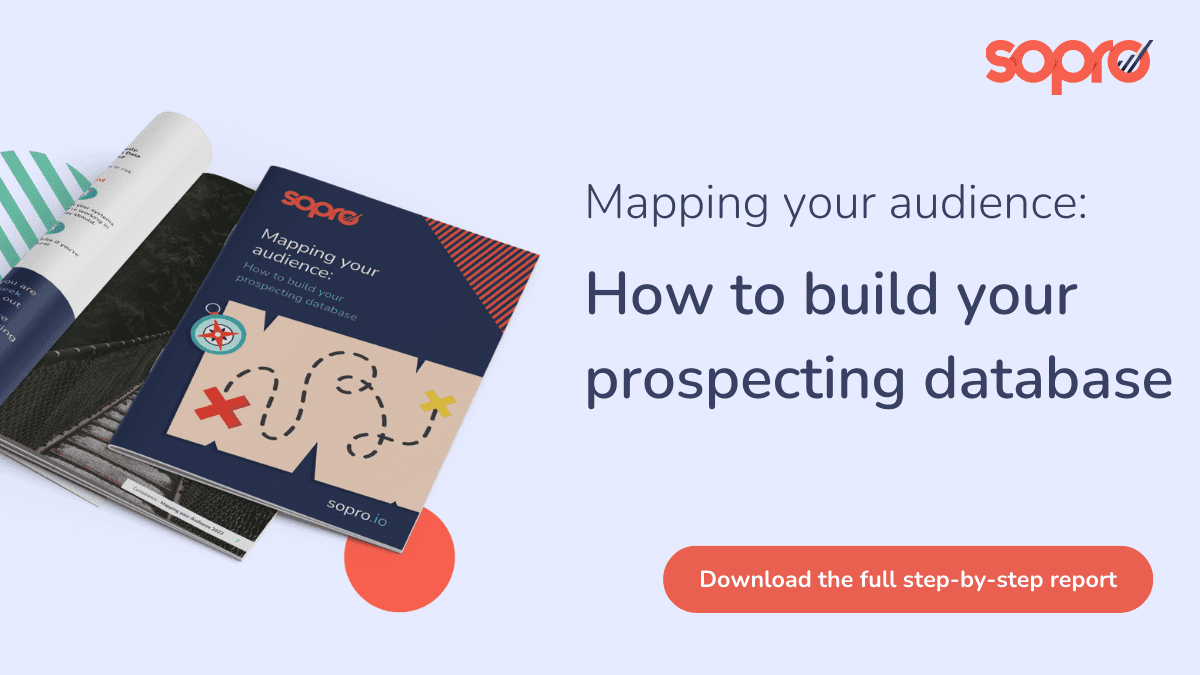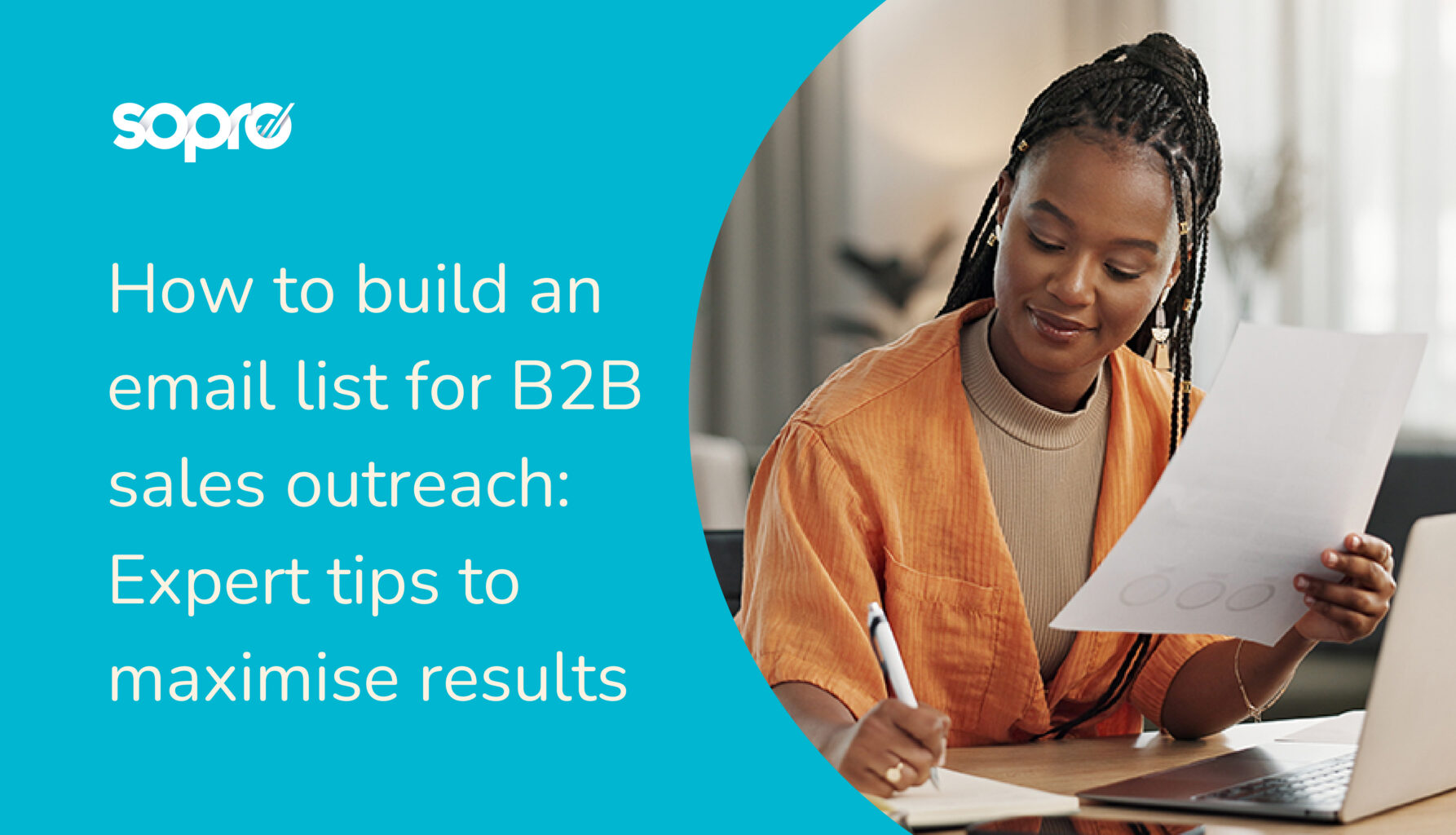How to build the perfect B2B prospecting database

Best practices for your prospecting database, why it’s crucial to do it properly, and how to build one that works for lead generation.
An up-to-date, relevant, and segmented database is the first secret to successful prospecting.
And while reaching that goal can take time and expertise, every sales prospecting campaign is built on three simple foundations:
- Target the right people
- Use their current contact information
- Comply with data protection laws
Which all sounds very obvious and sensible, right? But while any reputable company will aim to get the third one right, a surprising number of prospecting databases get the first two wrong. Using inaccurate B2B contact data will see fewer emails delivered, potentially harming your domain reputation, and your lead conversion rate will be lower.
In this post, we’ll explain how to build or obtain an accurate and effective B2B prospecting database that will lead to sales.
What is a B2B prospecting database?
A B2B prospecting database is a list of information about your target audience. It contains data on the businesses and key decision-makers that match your ideal customer profile. It includes contact information, allowing sales teams to conduct outreach and drive sales leads.
Best practice means this data only contains people that would benefit from your product or service. It means selling to them is much more likely, for a start. And it makes life much easier when it comes to GDPR.
“With B2B, you’re not expected to actively ask for consent when processing data – you can send direct marketing to business contacts if there’s ‘legitimate interest’.“
Types of data
There are several different types of data you can collate. Simple data lists will include contact details: email address and phone number. Behavioural and (some) demographic data can be found if they’ve visited your website.
The other types – technographic data, firmographics, chronographic, and intent data – can be a little harder to come by, and you might need to partner with a specialist data broker or prospecting agency.
Why can’t I just email everyone?
Mainly, the great big elephant in the room. You need to be GDPR compliant.
That means your email marketing should only contact people who could have a legitimate interest in your product or service, or who have given their consent to be contacted.
GDPR is a serious business and you can face heavy fines – 4% of your annual turnover or €20 million, whichever is the higher amount – if you don’t adhere to the regulations.
But there are more reasons not to get trigger-happy with your email contact list.
Good data improves your results and ROI – save time and money!
Good data improves lead quality – stops sales reps from wasting time on low-quality leads
Good data protects brand reputation – selling honey to a bee is not clever
Good data protects your domain – low engagement plus high bounce and unsubscribe rates could ultimately see you blacklisted.
It might sound quicker – type one email, send to all – but a copy-and-paste email wastes time and resources. So, narrow down your audience.
How do you get a B2B sales contact database?
If you’re new to business development, you might be thinking “where can I get B2B prospecting data from?”. And you’d be asking the right question – see, you’re a natural at this!
Relevant business contact information doesn’t just grow on trees. It needs to be sourced. Initially, data earned from inbound B2B marketing, mixed with manual outreach using LinkedIn Sales Navigator is a common starting place.
Creating your own B2B contact database
Creating your own database is time-consuming, but it can be done with hard work and perseverance.
- The first step is to work out who you want to target, in other words, your Ideal Customer Profile (ICP). This will be mainly looking at firmographic data initially. Without an ICP, you’ll have nowhere to start when trying to find contact information.
- The next step is finding those people. Write a list of companies that match your ICP and try to narrow that down to departments where your decision makers are most likely to work.
- Once you’ve identified who you’re targeting, it’s time to collect data. Doing this manually will involve going through websites, LinkedIn, and other social media sites to find contact information for these people.
Tip: Keep in mind that most people won’t want to be contacted about “work stuff” through their personal Instagram.
- Compile this data into a spreadsheet and you’re ready to start email prospecting!
This method only really works if you have the resources and time available. Ask yourself: how many contacts could I collect in a day doing this? Maybe ten, if you ignore your own emails and burn the midnight oil… Is that really efficient and sustainable?
Let’s say for now this approach works for you, what needs to be done to turn that simple list into the basis for data-driven marketing campaigns?
How do you turn that into a B2B lead database?
One of the biggest challenges when sourcing your own B2B database is keeping it up to date. As people move roles and companies, the data you hold becomes obsolete.
The decision-makers change, the sales reps are now the managers.
Working on the evidence people change roles once every three years on average, your data will be 80% obsolete in just four years’ time.
So how can you keep your data fresh and ultimately, convert from prospects into leads?
Much like creating your own B2B contact database, keeping it up-to-date is time-consuming, but essential. Let’s take a look at the steps you can take to maintain your database:
- Keep everything organised and in one place
- Make sure you don’t have any duplicate records
- Segment your audiences to help you to organise systematic audits of your data
- Schedule audits where you check contacts are up to date, do one segment every quarter and you should maintain a relevant database
- Back up your contacts using a CRM
- Regularly audit your subscribers or mailing lists
Get everything you need to know about building b2b prospecting lists in our guide.
Bring in the B2B data professionals…
What’s the alternative to all that work? The easiest way to get high-quality, up-to-date B2B data is to outsource it.
Buying data is one option, and can be seen as a quick and cheap way to get data. But be careful about buying data, and always remember the three pillars we started with: is it targeted? Is it up-to-date? Is it compliant?
High volume, low price data can hurt your brand, and poor quality sales intelligence will impact campaign results and more. If you can find a reliable data provider, then you just need to concentrate on the campaigns themselves.
Alternatively, you can find an agency partner and outsource sales outreach from start to finish.
Sopro’s fully-managed B2B prospecting service drives new sales enquiries from your ideal customers, using only freshly sourced data. We build a highly targeted audience just for your campaign, so you can be sure it’s targeted, up-to-date, and compliant.
We combine a cutting-edge platform, world-class data, and unrivalled prospecting experience. We source your ideal prospects, engage them with personalised emails, and connect them directly to you when they are ready to talk business. The Sopro platform helps you continue nurturing and engaging each lead until you close the deal.
So you can simply focus on doing what you do best: selling your product or service. Spend more time and resources on converting prospects into leads with Sopro.
Contact us today to see how Sopro’s approach to data and prospecting can help you sell more.








Share